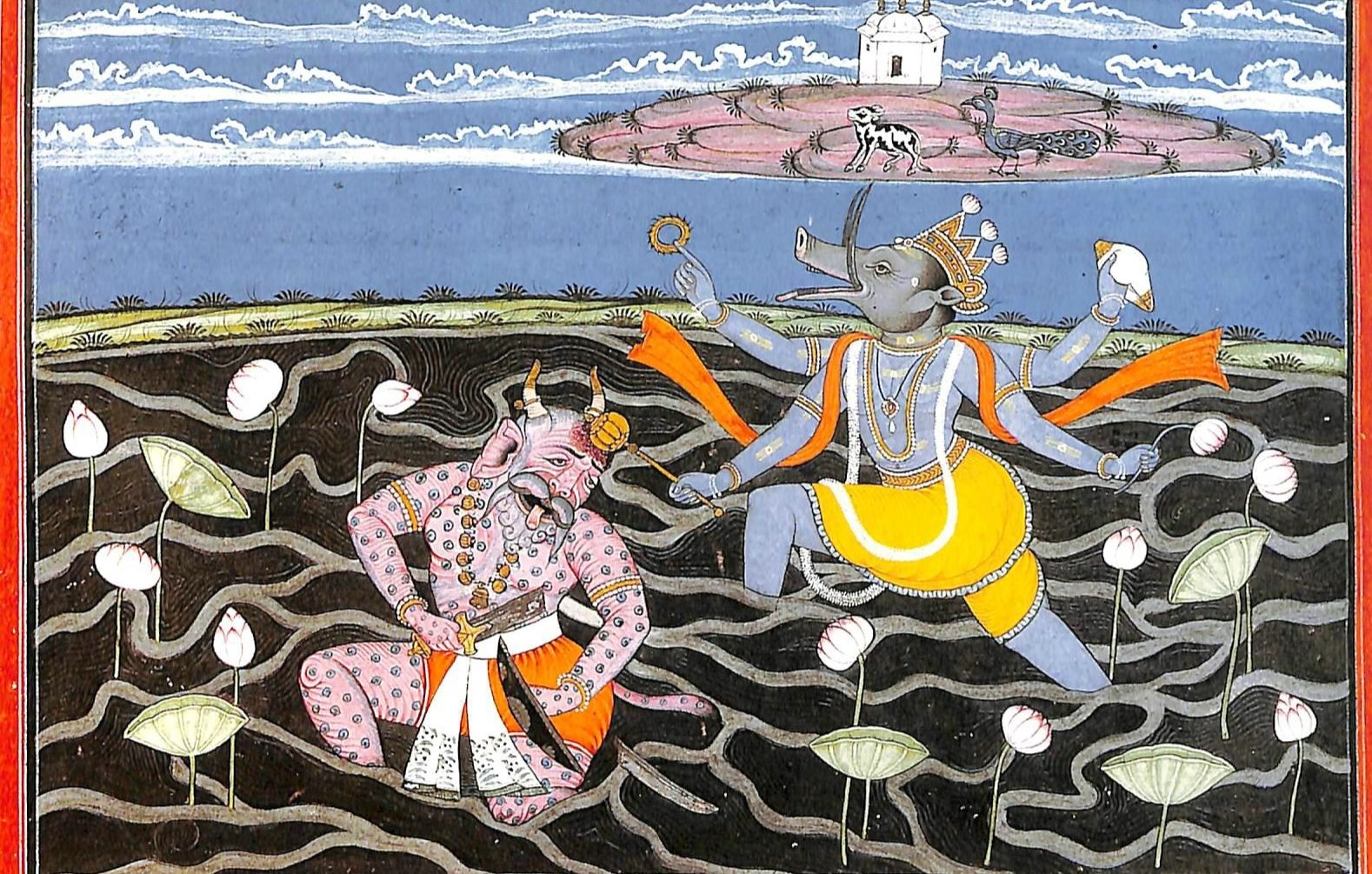The Tale of the Tungabhadra
Published on: 02/03/2022
Published on: 02/03/2022

A view of the Tungabhadra winding past Hampi’s breathtaking boulder-strewn landscape – Photograph: ShivajiDesai29, CC BY-SA via Wikimedia Commons

Varaha the boar-faced is one among ten avatars of Vishnu and is often depicted in temples or paintings. – Photograph: Public Domain

Devayani Khare is a geo/science communicator by profession, and wanderlust at heart. Having studied geomorphology - the evolution of landscapes through time, she believes landscapes are about memories - those captured in or imprinted upon rocks, the genetic legacy of biodiversity, and the echoes of human history. Through a regular newsletter, Geosophy and other stories, she hopes to capture and convey the ‘persistence of memories writ in stone.’ Her stories draw inspiration from her interests in geography, birdwatching, wildlife, mythology, and literature.

STORY TITLE GOES HERE

STORY TITLE GOES HERE
Craft Calling: Traditional Lambani Arts and Crafts and the Sandur Kushala Kala Kendra
The Path of a Downfall: Movements that Led to the Collapse of the Vijayanagara Empire
Hampi Ruins in the 1900s: Stellar Photographs From A Forgotten Historical Text
North Karnataka’s Threesome — Badami, Aihole, & Pattadakallu
Hampi Ruins in the 1900s — The Gateways into the City
The cute little denizens of the Kamalapura Palace, Hampi
From the Kitchens of Evolve Back – Jallad Roti | Akki Roti
From the Kitchens of Evolve Back – Qubani ka Meetha and Shahjahani ka Meetha
From the Kitchens of Evolve Back – Murgh-e-Lazeez
From the Kitchens of Evolve Back – Nizami Machali ka Salan
From the Kitchens of Evolve Back – Dum ki Nalli
From the Kitchens of Evolve Back – Anapa Ginjala Pulusu
From the Kitchens of Evolve Back – Raan-e-Kamalapura
From the Kitchens of Evolve Back – Baghara Baingan
From the Kitchens of Evolve Back – Natukodi Pulusu
From the Kitchens of Evolve Back – Tondekai Palya
From the Kitchens of Evolve Back – Royala Igaru
From the Kitchens of Evolve Back – Koli Chuttada
From the Kitchens of Evolve Back – Karibelle Cutlet
The Battle of Talikota and the Sacking of Hampi
From the Kitchens of Evolve Back – Kori Ghee Roast
Harihara & Bukka: founders of the Vijayanagara Empire
The Battle of Raichur: The Beginning of the End